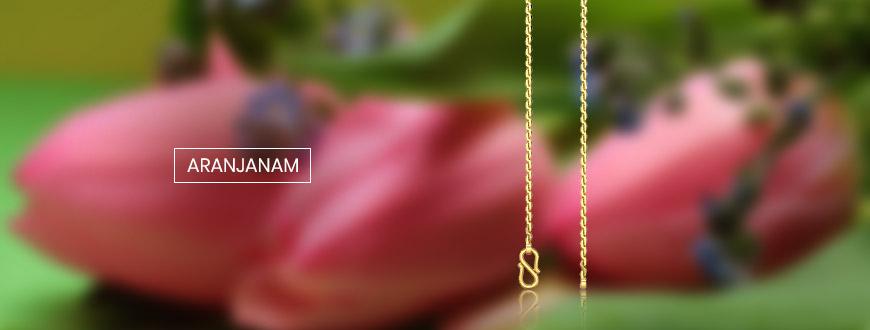Kalyan Wiki

Aranjanam
Aranjanam is essentially a waist chain; a cord-like ornament made of silver or gold or a thick black thread meant for infants and children.
Aranjanam is a word in the Malayalam dialect whereas in Tamil it is called “Arajan Kayir”. The foremost reason for making a baby wear an aranjanam is to measure healthy growth indicated by the increase in the waistline.
Namkaran or Naming Ceremony
In South India, Aranjanams are given to babies as a part of a ceremony called the Naming Ceremony on the 28th day of baby’s birth. The day is called “Irupathettu”, i.e. the day when the star or the “nakshathram” of the child repeats as per the Malayalam Calendar. On that day, they are adorned with a black thread or a gold chain intertwined around the waist.
The baby is made to wear his/her first ornament along with kanmashi or kohl and is offered sweet porridge (ghee mixed with honey) as the first meal. The baby is also given a black spot on the cheeks and titled on the forehead to defy evil eyes. The father of the baby then ties the chain around the waist and whispers the baby’s name thrice in the right ear while covering the left ear with a betel leaf and vice versa.
As per the age-old concept of Ayurveda, a silver aranjanam or waist chain activates the “Mooladhar Chakra” and enhances the regulation of the kidney and the urinary bladder. It’s also believed to relieve backaches and other such pains.
Deities in the Hindu religion like Lord Krishna are also believed to have worn waist chains. In the famous Raja Ravi Varma painting, we can see Yasodha adorning baby Krishna with jewels where He looks super adorable with a golden aranjanam around his waist.







